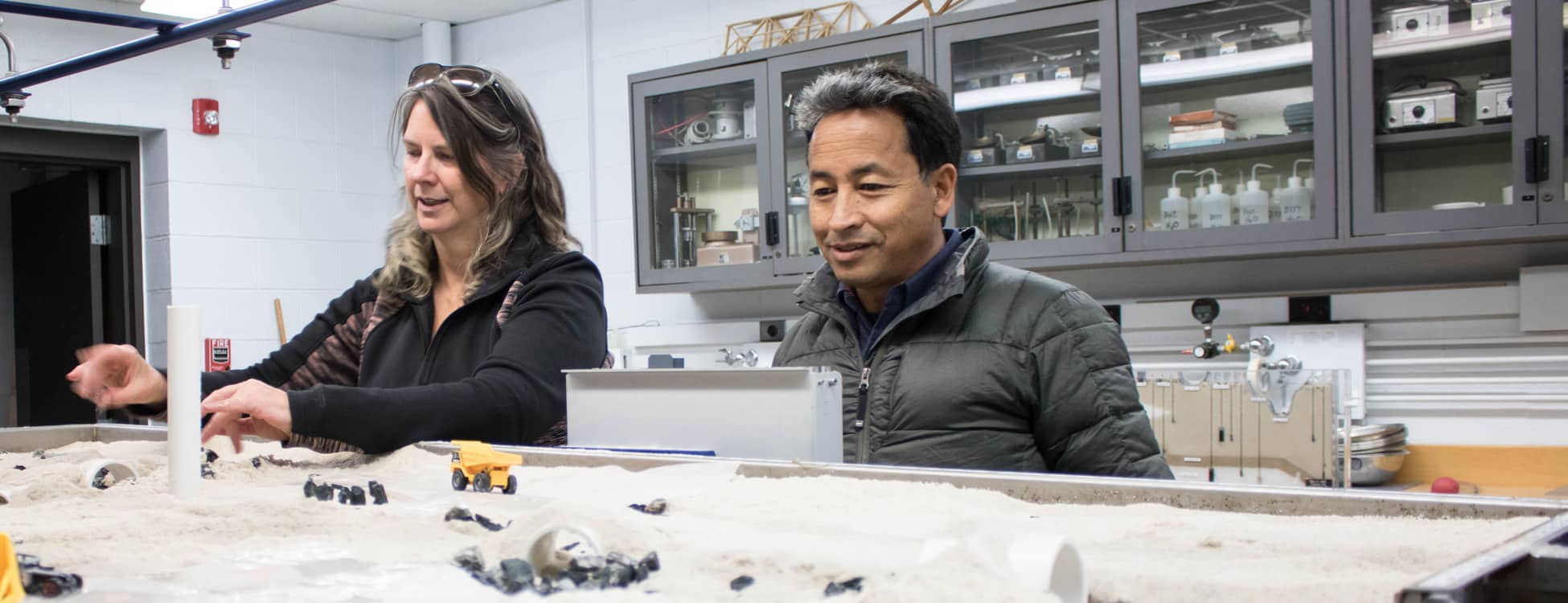Vermont Tech welcomed Sonam Wangchuk, an engineer and educator from Ladakh, India, to our Randolph Center campus on Tuesday, October 31st. Wangchuk is renowned for developing artificial glaciers, known as ice stupa, to provide the arid climate in his region of India with fresh water all year round.
Wangchuk is also the founding director of the Students’ Educational and Cultural Movement of Ladakh (SECMOL) a school that was founded in 1988 by a group of his students. The students of SECMOL learn how to solve problems that face their region with practical solutions. Similar to Vermont Tech’s education, the lessons feature hands-on activities to reinforce concepts learned in the classroom. SECMOL is net zero, meaning they produce their own electricity, without taking from the grid. Like Vermont Tech, The energy needs of the school are mostly filled by a solar panel array, which the students themselves built and maintain.
Wangchuk’s vision for his school, and every school, is that they will teach with the ‘three h’s’ in mind. The three h’s being head, hands, and heart.
He says, “With [Vermont Tech] as an exception, generally schools are too intellectually based. The emphasis is on intellect, which is too much to do with the head alone.” He went on to say, “The hands are to apply what you learned, and the heart is working with others. Not just yourself, but humanity, and not just humanity, but all of creation.”

A colleague of Wangchuk grew up near Vermont Tech’s Randolph Campus and has always admired our education model, and the graduates we produce. This colleague reached out to the College for a tour of its facilities.
The visit began in the Civil Engineering Lab where Civil & Environmental Engineering Technology Department Chair, Mary O’Leary, demonstrated use of our water table and talked about the importance of hands-on education. This lab space in particular is a perfect example of how hands-on learning helps apply concepts to the real world. Wangchuk seemed particularly interested in the water table, noting that a similar tool could help him and fellow leaders of Ladakh predict and prevent flooding in his region. His region in Northern India sees an average rainfall of four inches a year, but the rain season is so compact the torrential rain quickly turns into flooding.
Professor O’Leary says that civil and environmental engineering is akin to a degree in problem-solving. To emphasize the work that is done, she said, “Vermont Tech students survey campus and make maps, they design dormitories, and even preform QAQC analysis on culverts. Companies will actually compete to be involved in student final design projects.”
After the tour of the Civil Lab, our guests got to see and smell Vermont Tech’s famous biodigester. Vermont Tech’s construction of the biodigester was an expensive undertaking. Mr. Wangchuk remarked that because of the rural nature of the Ladakh area this model would not be sustainable in his region, but that something similar could be applied.
Wangchuk expressed admiration for the Vermont Tech mission and commitment to providing students with a practical education.


